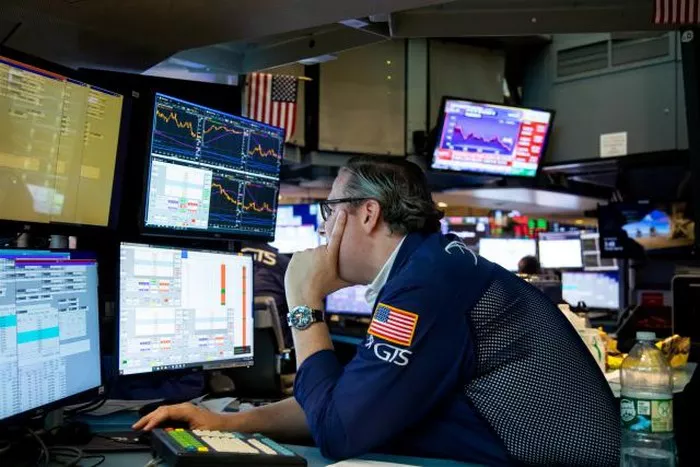Introduction
In the realm of finance and economics, acronyms often wield significant power, symbolizing complex entities and institutions. One such acronym, ubiquitous in the derivatives market, is CME, standing prominently in the title of the world’s leading derivatives marketplace – CME Group. However, what does CME truly signify? This article delves into the origins, evolution, and significance of CME within CME Group, offering clarity to professionals and enthusiasts alike.
Origins of CME:
To unravel the meaning behind CME in CME Group, one must traverse back to the early roots of derivatives trading in the United States. The story begins with the establishment of the Chicago Mercantile Exchange (CME) in 1898. Situated in the heart of Chicago, a burgeoning hub of agricultural commerce, the exchange initially focused on facilitating futures contracts for agricultural commodities such as wheat, corn, and livestock.
The emergence of the CME marked a pivotal moment in financial history, introducing standardized contracts that enabled producers and consumers to hedge against price fluctuations, thereby mitigating risk. Over the decades, the exchange diversified its product offerings beyond agricultural commodities, venturing into interest rates, equity indexes, foreign exchange, and alternative investments.
Evolution into CME Group
As the landscape of derivatives trading evolved and globalization accelerated, the Chicago Mercantile Exchange underwent transformative changes, reflecting its expanding scope and reach. In 2007, the CME merged with the Chicago Board of Trade (CBOT), another venerable institution tracing its origins back to the 19th century. This historic amalgamation gave rise to CME Group, a behemoth in the derivatives market with unparalleled liquidity and product diversity.
The fusion of CME and CBOT marked a watershed moment, not merely in terms of corporate consolidation but also in shaping the trajectory of derivatives trading on a global scale. The newly formed CME Group extended its footprint beyond traditional futures contracts, incorporating a wide array of financial instruments catering to the evolving needs of market participants worldwide.
Deciphering the Meaning of CME
With the establishment of CME Group, the acronym CME transcended its original connotation as the Chicago Mercantile Exchange, assuming a broader significance encapsulating the collective identity of the merged entities. While CME once denoted a specific exchange specializing in commodities futures, within the context of CME Group, it symbolizes a comprehensive derivatives marketplace encompassing multiple exchanges and product lines.
Understanding CME Group:
At its core, CME Group serves as a nexus where buyers and sellers converge to engage in the trading of derivatives contracts spanning various asset classes. These contracts, ranging from futures and options to swaps and E-mini products, enable market participants to manage risk, speculate on price movements, and gain exposure to diverse financial markets.
The derivatives landscape within CME Group is characterized by its depth, breadth, and liquidity, underpinned by cutting-edge technology and robust risk management practices. Market participants, including institutional investors, hedge funds, corporations, and individual traders, rely on CME Group’s platforms to access transparent and efficient markets, facilitating price discovery and market efficiency.
Key Offerings within CME Group
Within the expansive universe of CME Group, several key exchanges and product lines stand out, each catering to distinct market segments and trading strategies:
CME: The flagship exchange within CME Group, offering a comprehensive suite of futures and options contracts across asset classes such as agriculture, energy, metals, and currencies.
CBOT: Building upon its storied legacy, the Chicago Board of Trade, now part of CME Group, continues to provide a diverse range of agricultural and financial derivatives products, including grain futures and interest rate contracts.
NYMEX: The New York Mercantile Exchange, acquired by CME Group in 2008, serves as a premier venue for trading energy and metal derivatives, including crude oil, natural gas, and gold futures.
COMEX: Complementing NYMEX, the Commodity Exchange, acquired by CME Group in 2008, specializes in precious metals derivatives, offering futures and options contracts on gold, silver, and copper.
E-mini Contracts: A popular category of futures contracts, E-mini products allow traders to gain exposure to equity indexes such as the S&P 500, NASDAQ-100, and Dow Jones Industrial Average with reduced contract sizes.
Impact and Significance of CME Group
The significance of CME Group extends far beyond its role as a mere marketplace for derivatives trading. As a global financial institution, CME Group wields considerable influence in shaping market dynamics, setting industry standards, and fostering innovation in derivatives products and trading practices.
Moreover, CME Group serves as a barometer of economic sentiment and market trends, with its futures contracts often reflecting investors’ expectations regarding key variables such as interest rates, inflation, and geopolitical developments. As such, fluctuations in CME Group’s futures prices can have ripple effects across financial markets, influencing asset prices, investment strategies, and risk management decisions.
Regulatory Framework and Oversight
Operating within a highly regulated environment, CME Group adheres to stringent regulatory standards enforced by regulatory authorities such as the Commodity Futures Trading Commission (CFTC) in the United States. These regulations govern various aspects of derivatives trading, including market integrity, transparency, and risk management, aiming to safeguard the interests of market participants and maintain the stability of financial markets.
CME Group collaborates closely with regulatory agencies, industry organizations, and market participants to uphold the integrity and resilience of its markets, implementing best practices and technological innovations to enhance market surveillance, risk mitigation, and compliance.
Conclusion
In conclusion, the acronym CME, embedded within the name CME Group, represents far more than its original designation as the Chicago Mercantile Exchange. It embodies the culmination of a rich history, continuous evolution, and global significance in the realm of derivatives trading. As a multifaceted derivatives marketplace, CME Group plays a pivotal role in facilitating price discovery, risk management, and investment opportunities for market participants worldwide. Understanding the essence of CME within CME Group is essential for navigating the complex landscape of modern finance and economics, where derivatives serve as indispensable tools for managing risk and unlocking value in dynamic markets.


